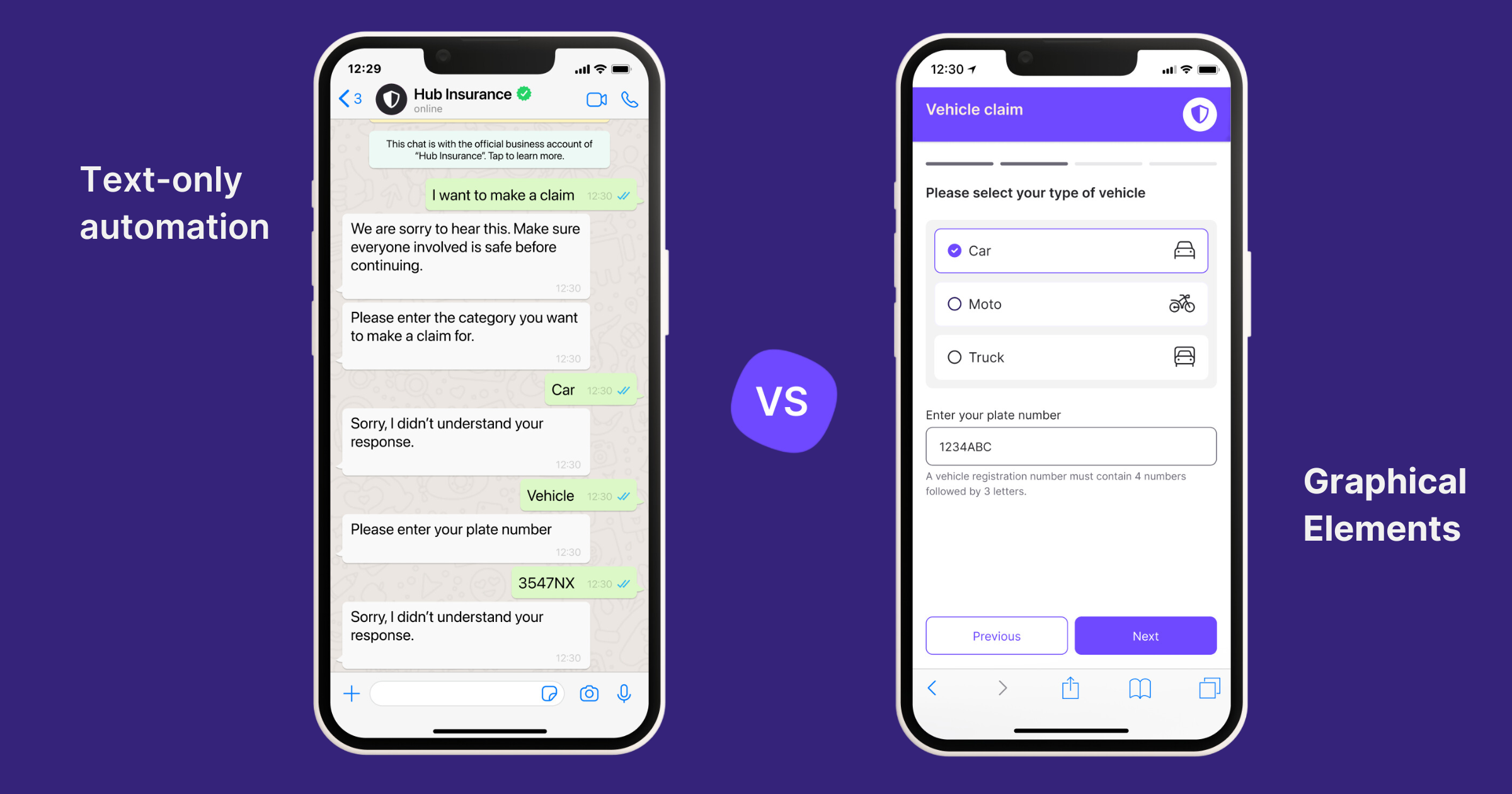
The way we communicate is changing, but many businesses are stuck in the past. Research shows that 7 in 10 businesses believe they’re chatting with customers just fine – only 2 in 10 people agree.
There's a big gap between the service people want and what brands offer. Bridging this gap is essential for any enterprise level brand's success in 2024.
Mind the Gap: From Calls to Messages
It's simple: 9 out of 10 people prefer messaging brands.
Chances are, you started and will end your day checking a messaging app like WhatsApp or Facebook.
Engagement on mobile messaging apps has shot up. Platforms like WhatsApp, Facebook Messenger, and Apple iMessage were gaining traction even before the pandemic hit.
The move towards messaging apps sped up as people looked for other ways to stay connected with family, friends, and businesses during and after the pandemic.
Companies aren't adopting messaging fast enough:
Consumers want to chat with businesses on messaging apps, but only 48% of businesses are ready.

The old-school approach of phone calls and emails continues. Investments are still being poured into outdated phone automation, even though customers clearly dislike it.
A report from Vonage highlights that over half (51%) of consumers have walked away from a business because they bumped into an automated menu of options.
So, why are we still stuck on hold for something that could be sorted with a quick message?
Overcoming Barriers to Conversational Messaging
Businesses get that messaging channels are good. Efficient chats mean happy customers — which means better business.
But, the fear of being swamped with messages holds them back.
The common hurdles include:
- Fear of a message overload.
- Tech hurdles due to old systems.
- Complex workflows that might confuse support teams.
These hurdles reflect a misunderstanding of what modern chat tech can do.
Conversational Apps: The Path to Better Chats
Now, chat technology can actually make things better. It gives businesses the flexibility and scalability they need to meet customer expectations.
Purposeful Automation Scales Operations
Here’s a key point businesses are missing: with automation, they can handle a lot of questions without needing a human. This is what businesses need to get on board with a chat approach.
For example, we have seen first hand from our clients usually automating 80% of support tickets, as most come from predictable interactions. So, instead of overloading customer support teams, messaging actually lightens the load.
Legacy Systems Are No Longer a Roadblock
Now, APIs (application programming interfaces) have made it possible for businesses to try new tech without ditching their old systems.
For instance, at Hubtype, our robust API lets us connect to any existing setup. Even traditionally structured companies can now use conversational apps to engage customers.
Simplifying Complex Workflows
Mixing automation and humans, when done right, is the secret to bridging the communication gap. It eases the customer journey. Conversational platforms allow precise automation, freeing up human resources for important tasks while making sure customers are routed correctly without needing phone automation.
Companies Bridging the Communication Gap
Winning brands are already using conversational apps with the help of our technology. In fact, since we set out, we’ve powered conversational apps for Bankia (former Spanish Bank), HP, Massimo Dutti, Levis, Volkswagen, and many others.
The following are just a few examples of how conversational apps can increase lifetime value and reduce friction for brands:
- Bankia reported that it has increased its net promoter score to 9.6/10 with the help of our conversational technology. The bank now replies to customers in under two minutes and is seeing a 3x higher engagement on WhatsApp than on other channels. They've also seen an increase in qualified leads.
- Insurance company, Lemonade broke a world record without breaking a sweat. Through its conversational app, one happy customer started and settled a claim within 3 minutes. “While others count the time it takes them to pay claims in days or weeks, we count the milliseconds” says Jim Hageman, Chief Claims Officer.
- For the third year in a row, beauty pioneer Sephora ranked #1 on Sailthru’s Retail Personalization Index. With its conversational app, Sephora makes shopping for beauty and skincare products fun, engaging and intuitive.
These stories are not uncommon. Brands all over the world are discovering that conversational technology is no longer synonymous with chatbots. It's much more powerful than that.
Beyond Chatbots
Even with GenAI, chat interfaces are still too limited for some use cases. But there’s a lot of confusion about what to call these advanced solutions.
So, what are Conversational Apps?
It's just like phone apps, except they're computer programs created to deliver a variety of user experiences. They're usually embedded into a messaging app like WhatsApp, Messenger, or Telegram, rather than existing as standalone apps.
Conversational apps blend texting with intuitive UX, much like websites and apps, without leaving the messaging platform.

They include rich-media elements like attachments, carousels, calendars, time selectors, and buttons, simplifying interactions and workflows, and significantly reducing friction for customers.
Guided flows are incorporated into the UX design of conversational apps. This makes it as easy as possible for a customer to complete a desired transaction or action.
Here's an example of how conversational apps simplify conversations and workflows:
.png)
With a conversational app, buttons and images make things much clearer for the customer. It's a sure-fire way to reduce the friction that leads to customer churn and missed opportunities.
What’s stopping you from bridging the communication gap?
Conversational apps are the future. The communication gap we’ve described is only widening as people depend more on digital channels.
It’s time for companies to realize that the barriers to a stellar customer experience are easier to overcome than they think.
Bridging the communication gap doesn’t have to be difficult. Contact Hubtype today to talk about your conversational strategy.



%2520(1).jpeg)







